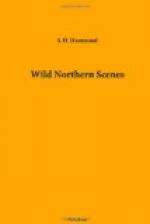“The lightning, that fierce spirit of the storm, that darted down on its mission of destruction from the black cloud floating in the sky, became a thing of interest to the mechanical world, and the question was asked, ’Why cannot the lightning be harnessed into the service of man, and be made utilitarian?’ Philosophy sneered at the wild delusion, but see how that same subtle and mysterious agency has been conquered? Note how truthfully it carries every word intrusted to its charge, along thousands of miles of the telegraph wire, with a speed, in comparison with which, sound is a laggard, a speed that annihilates alike space and time. Men looked into a mirror, and seeing their own counterpart, a fac-simile of themselves reflected there, began to ask, ’Why may not that shadow be fixed; fastened in some way, to remain upon the polished surface that gives it back, even after the original may be mouldering in the grave?’ Here again philosophy laid its finger upon its nose, and winked facetiously, as if it had found a new subject for ridicule, in the stupendous folly of such an inquiry. But from that simple question, rose up the Daguerreian art; an art which fixes upon metallic plates, upon paper, the shadow of a man, of palace and cottage, of mountain and field, giving thus a picture ten thousand times truer to nature than the pencil of the cunningest artist. These and a thousand other mighty triumphs of human ingenuity have fought their way onward to their present position, against the fogyism of philosophy, the inertia of the schoolmen. They have been the sequence of cold, resistless demonstrations of experiment and fact. The world would stand still but for the spirit of research for the practical; for experimental, and not theoretical knowledge, that is abroad. It is this spirit that moves the world in all its present matchless career of progress, and distinguishes our era above all others of the world’s existence. You may be thankful, my friend, that you have been able to add another fixed fact to the stock of human knowledge, even though it be only that the ‘peeper’ is a frog, and not a ‘newt’ or a ‘myth.’




